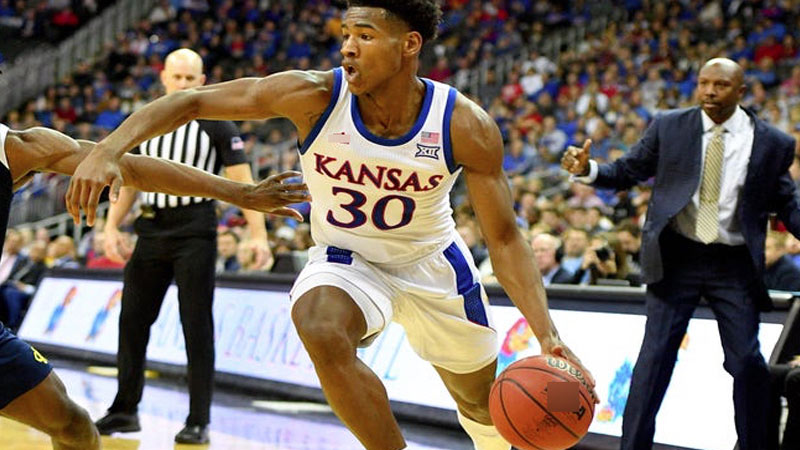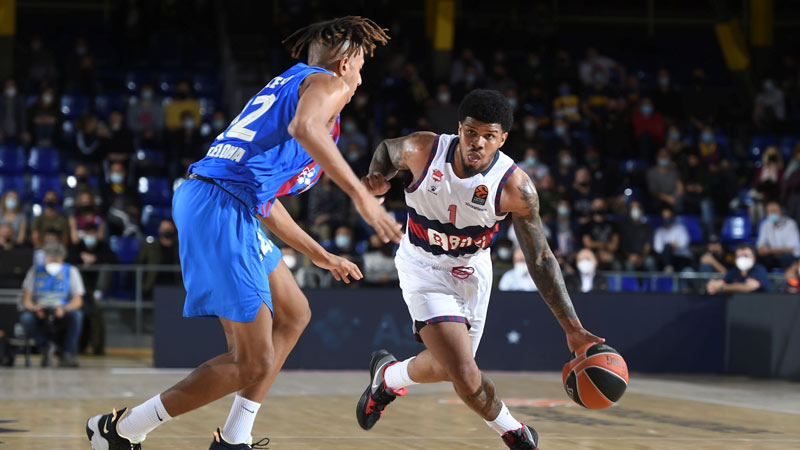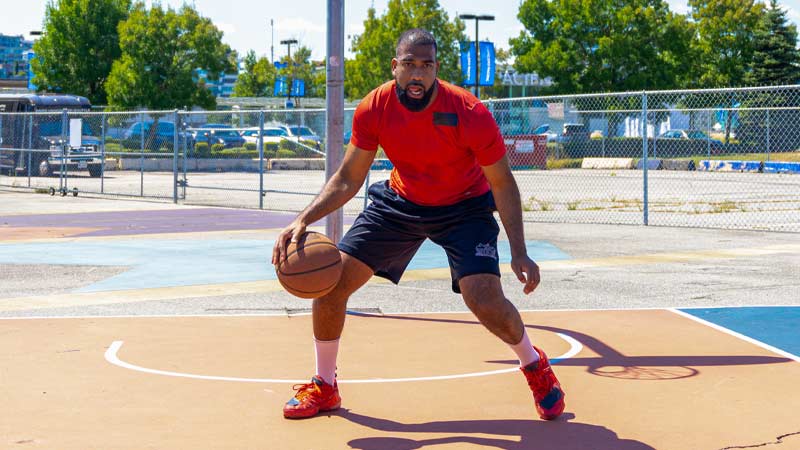We all know about the Penalties in Basketball. Our in-depth article on the topic made sure you miss nothing. But what about the Basketball Violations that lead to the penalties?
Basketball violations and fouls are the most common part of the sport. Even if you are a rookie or a seasonal player, having the right understanding of the violations is mandatory; especially to ignore such situations.
In our comprehensive guide today, we will get to the details of Basketball Violations; and how you should handle the situation to prevent a penalty.
Let’s get started.
Defining Basketball Violations
Basketball is a sport for everybody; people of all ages worldwide enjoy this sport to the fullest.
Even though there are slight variations based on geographical differences and background, every violation has rules to follow.
In Basketball, a violation commonly occurs when a technical or personal foul takes place on the court. Violations lead to penalties; such as one or more free throws or, a change in possession of the ball.
Some may result at the end of a period!
With a careless approach to the violations, you may get fouled out of the game, or worse, violations can ban your team.
Thus, you must be aware of the basketball violations and penalties. There are different violations in basketball. And most of them result in a turnover. We are going to cover them all today.
Types of Basketball Variations
If we try to sort it out one by one, we may end up confusing ourselves. Rather, let’s categorize the types of basketball variations and learn accordingly.
For example, mishandling the ball can lead to four types of basketball violations; time-related violations in basketball are many!
Let’s get ahead.
1) Ball Handling Violations

Source: quizlet.com
This type of violation is usually for the offensive team; when they mishandle the ball. Such as traveling with the ball or dribbling unusually.
Several violations fall under this category. Take a look.
I) Traveling
It is one of the most basic violations in basketball; happens when a player takes too many steps without dribbling without establishing a pivot foot. It instantly results in a turnover.
Both NBA and FIBA allow a player to take two steps after receiving their ball or picking up their dribble. Having more than two steps will be considered traveling in basketball.
We have a detailed analysis of what traveling is and how you may handle the situation. Pay a visit here.
Penalty
Penalty due to traveling leads to an offensive turnover; resulting in loss of possession of the ball to the opposing team.
They will receive the ball on the sideline, to the closest spot of the violation but not nearer the baseline than the foul line extended.
II) Carrying/ Palming
Palming is also an illegal dribbling technique in basketball. It occurs when a player controls or grips the ball excessively using his hand while dribbling.
Keep in mind that palming doesn’t always result in a penalty. Only when the referee notices an unfair advantage has been established using palming, he calls for a penalty.
This is why you won’t find it in the official Basketball rulebook.
Carrying/ Palming only results in a penalty when the ball is held below or above the waistline; resulting in a loss of possession.
Penalty
Palming or carrying violation results in a turnover; where the opponent team gets the ‘Clear Path’ opportunity to goal from near the mid-court.
III) Double Dribbling

Source: scottfujita.com
Another common violation due to mishandling the ball is double dribbling. It happens when
- A player contacts or attempts to contact the ball after lifting both feet from the ground.
- Gets the ball in possession for an instance before bouncing, throwing, or shooting it again.
To put it simply, in basketball, once a player stops dribbling, he can not dribble again unless he passes the ball to another player. Violation of this, especially when committed during a fast break will have some consequences.
Penalty
Double dribble violation will result in loss of possession of the ball to the opponent. They will receive the ball and can score from any spot within the free throw line extended.
Learn more about Basketball Court here.
IV) Backcourt Violations
It is not only one violation but a set of violations that are meant to keep the ball moving throughout the court.
In simple words, a backcourt violation happens when an offensive player crosses the mid-court line and retreats to their backcourt immediately.
NBA official rules state that when the ball passes the half-court line, the offensive team must proceed to the frontcourt with the ball and cannot return to the backcourt unless the defense forces a turnover.
Penalty
Like most other violations, backcourt violations also lead to offensive turnover, with the opposing team gaining possession of the ball.
2) Time-Related Basketball Variations
Basketball is a timely sport with different rules for specific actions. Such as a player can not possess the ball for more than 5 seconds. Exceeding the time limit will result in basketball violations.
Here are four violations and penalties for taking additional time.
I) Three-Second Violation
In basketball, the three-second violation happens when an offensive player remains in the opposing team’s key area (also known as the paint) for more than three seconds without actively participating in the game.
NBA Rule 10, Section VI (a) defines that,
“An offensive player shall not remain for more than three seconds in that part of his free throw lane between the end line and extended 4’ (imaginary) off the court and the farther edge of the free throw line while the ball is in control of his team.”
The basketball has to be in control of the player who is in the paint of the opponent. However, if an opponent bats away the ball, no violation will occur.
Penalty
The regular penalty to the three-second rule is the loss of the ball. The opposing team will receive the ball on the sideline at the free throw line extended.
II) Five-Second Rule
Also known as back-to-back basket violation, it applies both to the offensive and defensive teams.
On offense, a player with the ball has five seconds to throw it to a teammate or attempt a shot. For defense, a player who guards the ball has five seconds to apply pressure and force the offensive player to make a move.
A violation takes place when the offensive player fails to pass or shoot within five seconds or if the defensive player does not pressure the ball-handler within the same time.
In basketball, the five-second rule is the most common type of violation. The five-second count ends when
- When a player picks up the ball.
- Or, dribbles from the free throw line extended.
- Or, a defensive player throws the ball away.
The penalty for this violation is as followed.
Penalty
A five-second violation also results in the loss of the ball to the opponent team out of bounds from the closest sideline at the free throw line extended.
III) Shot Clock Violation
The shot clock in basketball refers to the amount of time within which a team must attempt a field goal. The allocated time varies from league to league.
For the NBA, the countdown stops at 24 seconds. However, the NCAA provides a time limit of 30 seconds. The time starts when a team gains new possession of the ball.
A shot clock violation happens when a team doesn’t take any attempt to field a goal within the limited time. Failure to do so will result in the penalty mentioned below.
Penalty
Without an attempt to score if the player airballs or only strikes the backboard, it will result in a turnover, losing the ball to the opponent.
IV) Overtime Violation
In basketball, when two teams result in a tie, and no winner is determined, the game runs into overtime. Players play additionally 3-5 minutes to determine the winner of the match.
Most leagues follow a 5 minutes long overtime period, while it may vary in some leagues too. For instance, FIBA sometimes provides an overtime period of 3 to 5 minutes.
The rules that apply during regulation play, including shot clock violations, backcourt violations, and other time-related violations, also apply during overtime.
Thus, players must be mindful of this additional time on the court. They must avoid committing any time-related violations during this time, as it can directly affect the outcome of the match.
Another commonly time-related violation is the timeline violation. It goes for the NBA, and other leagues as well.
After an inbound pass, an offensive team has eight seconds to pass the ball across the half-court line. Taking more than eight seconds will have the other team receive the ball.
Here end our major types of Basketball Violations. But there are more and it ends no sooner. Take a look at the other violations in a glimpse.
| Type of Violation | Description In Short | Penalty |
| Personal Foul | Unnecessary and provoking physical contact between two players – hitting, pushing, or tipping. | The opponent gets one free throw attempt |
| Flagrant Foul 1 | Excessive or severe contact during a live ball is considered malicious. | Two free throws and a throw-in for the opponent at the out-of-bounds spot nearest the foul |
| Flagrant Foul 2 | Unnecessary and excessive contact may result in injury. | Two free throws with losing possession to the opponent |
| Technical Fouls | Intentional delay in the game, foul language, defensive 3 seconds, and more. | Two free throws with the ball for the other team |
| Double Foul | Two players performing fouls on each other at the same time. | The offense retains possession of the ball |
| Charging Foul | A personal foul is when an offensive player runs into a player without motion. | A turnover |
| Blocking Foul | A defender intentionally makes contact with an offensive player; blocking their to goal attempts or moves. | The player who gets fouled will have two shots |
| Goaltending | The defensive player gets in between a shot that is on its way to the basket. | The offended team is awarded two points, and three points if the attempt is from the three-point zone. |
There there! Now, we have a clear understanding of different basketball violations. It is the duty of every player and viewer on board to pay attention to these rules and understand them for a better understanding of the game.
Last Words on Basketball Violations
At this point, you must already know about different violations in basketball. It is more than just essential to understand these rules better and get performance in court.
The rules mentioned here are all infractions, and players must keep them in mind to ensure no unfair situations arise in the court. After all, basketball is a game of fair play and enthusiasm.
As for the viewers like us, learning about Basketball Violations can help us track and better observe the game. So, what are you waiting for?
Enlighten yourself and also don’t forget to share our article with your friends and also leave your opinion in the comment section.







